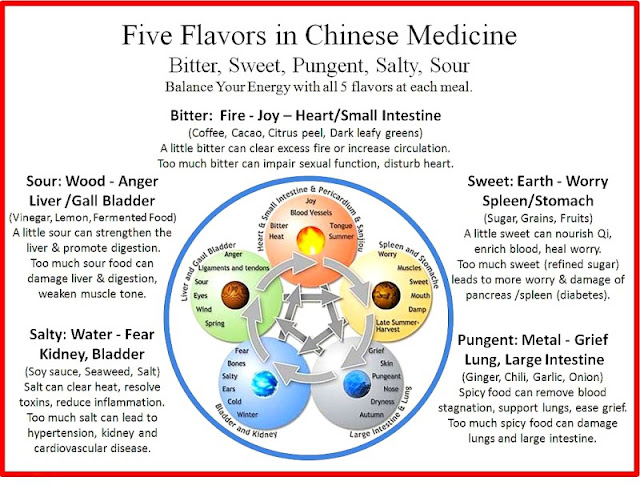Traditional Chinese Medicine
 |
| This chart makes me hungry. |
Traditional Chinese medicine or Eastern traditions classify food, including herbs, based on yin and yang: energy qualities that are the basis for everything in the universe. Warming and cooling foods are very important for maintaining your health. Some foods fall into the neutral area, being neither cool nor warm.
The goal is to achieve balance in all things, equating yin and yang. It is sort of the same thing as "moderation in all things." If you have an excess of yin or of yang, you would choose foods from the other group to normalize your system. These principles are said to affect everything in the Universe.
Cooling foods have yin qualities, which are coolness, darkness, and dampness or moisture. They clear the body of toxins and heat while also cooling the blood.
People should consider eating cooling foods if they show signs of constipation, thirty, anxiety, red eyes, headache, vivid dreams, oral ulcers, cold sores, rapid pulse, heartburn, yellow or dark urine, perspiration, odorous stools, feeling hot, and red eyes.
Common cooling foods include but are not limited to:
amaranth, apples, asparagus, barley, barley grass, blueberries, blue-green algae, bok choy, broccoli, cantaloupe, celery, chlorella, cilantro, citrus, coconut water, cucumbers, green tea, jack fruit, kiwi, lettuce, mangoes, melons, millet, mulberry, mushrooms, peppermint, tomatoes, and zucchini.Again, a balance must be struck, you can't just eat cooling foods.
Warming foods have yang qualities. Yang is characterized by warmness, light, and dryness. Warming foods enhance blood circulation, dispel the cold, and boost the energy of the organs. Those with cold hands and/or feet, diarrhea, stomach pain after consuming cold foods or beverages, bloating after eating, sore joints, fluid retention, and edema would consume warming foods.
Common warming foods include:
almonds, anise, basil, carob, cherries, chives, cinnamon, cloves, coffee, coriander, cumin, dates, dill, garlic, ginger, kumquats, leeks, mustard greens, oatmeal, onions, papaya, pumpkin, quinoa, rosemary, scallions, vinegar, watercress, wild rice, wine, and winter squash.Balance warming and cooling foods for your best results.
Practical applications would include eating cooling foods if you are overheated or live in a very hot place, or eating warming foods if you live in a snowy environ.
Clearly, this is just a small introduction to the field, and anyone serious about learning traditional Asian remedies might want to do a little research about them.
2018









No comments:
Post a Comment
Note: Only a member of this blog may post a comment.